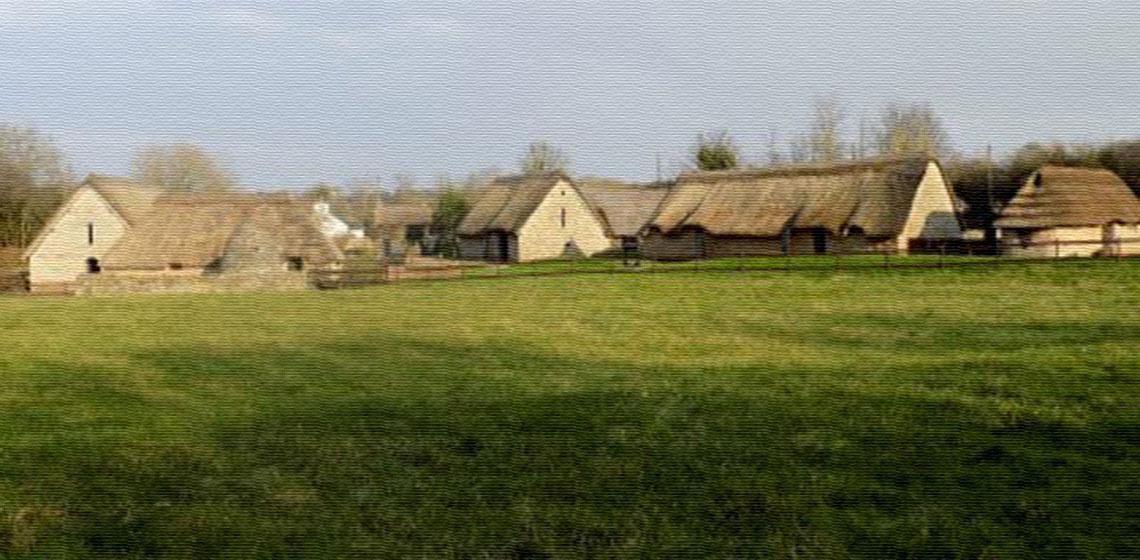Cosmeston Medieval Village (UK)

Just south of Cardiff you will find the town of Penarth. In the 1970s the local council decided to create a country park out of a former quarry and landfill site just outside of Penarth in area that was marked on old maps as being called Cosmeston.
During excavation works for the car park for the country park the remains of Cosmeston Medieval Village were found and it was decided by the council in partnership with The Glamorgan Gwent Archaeological Trust to reconstruct the excavated remains of the village on their original foundations. The first reconstructed buildings were open to visitors in 1983, with the remaining buildings being completed by 1990. Visitors to the village are either led around by guides in medieval costume who talk about the history of Cosmeston and life in a medieval village or by self-guided audio wands
The modern name of Cosmeston is an anglicized way to pronounce the name of the original Norman name of the village, which was given in 1166 as being Costantino as it belonged to the de Constantine family. The first recorded history of the name Constantine in connection to the village itself comes in 1166 when a Robert de Constantine awarded one knights fee for being the manorial lord.
A few more Costantine names appear in connection with village but there is very little recorded history in regards to the village during its early life. The de Constantine family also owned lands in England, for example Geoffrey de Constantine who was lord between 1211-12, also held Orchardston in Wiltshire and possibly Thorpe Constantine in Staffordshire. So it would appear that the Costantine family had grander plans than to own a small medieval welsh village and so it was left to almost govern itself, or maybe they left a poor younger brother to manage the estate and he kept very few accounts of his life.
The lack of factual evidence still gives the medieval scholars lots of possible scenarios to make conjecture about.
The greatest change to village life in Cosmeston happened when the village obtained a new Lord, Sir William De Caversham, who was treasurer of Cardiff Castle, became the new lord in 1317 and it is his stone built village that has been reconstructed for visitors.
The village is open to visitors from 10:00 am- 10.00am to 5.00pm April to September (last entry at 4.00pm) and 10.00am to 4.00pm October to March (last entry at 3.00pm). The village is closed (Closed Dec 24, 25, 26 and Jan 01). Guided tours take place at 10.30am, 12.00pm, 1.30pm and 3.00pm. Tickets four guided tours are available at reception and must be purchased no later than 15mins prior to tour start time. Audio tours are available from reception at any time of the day.
